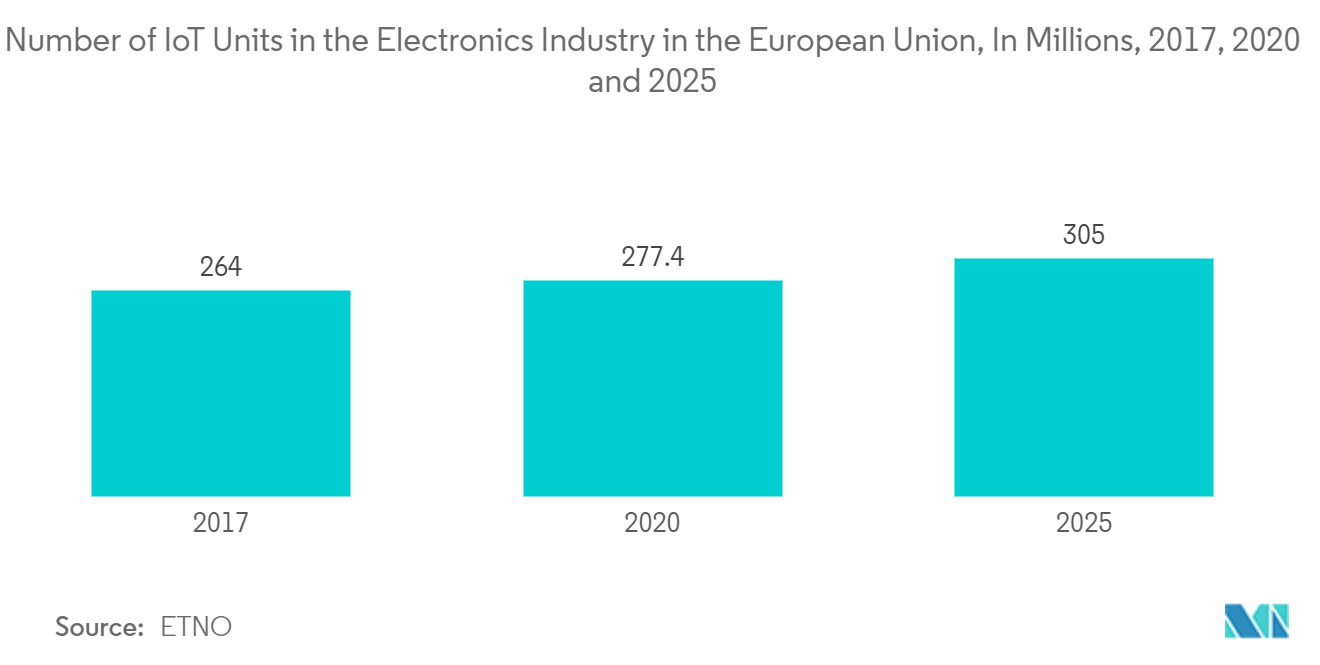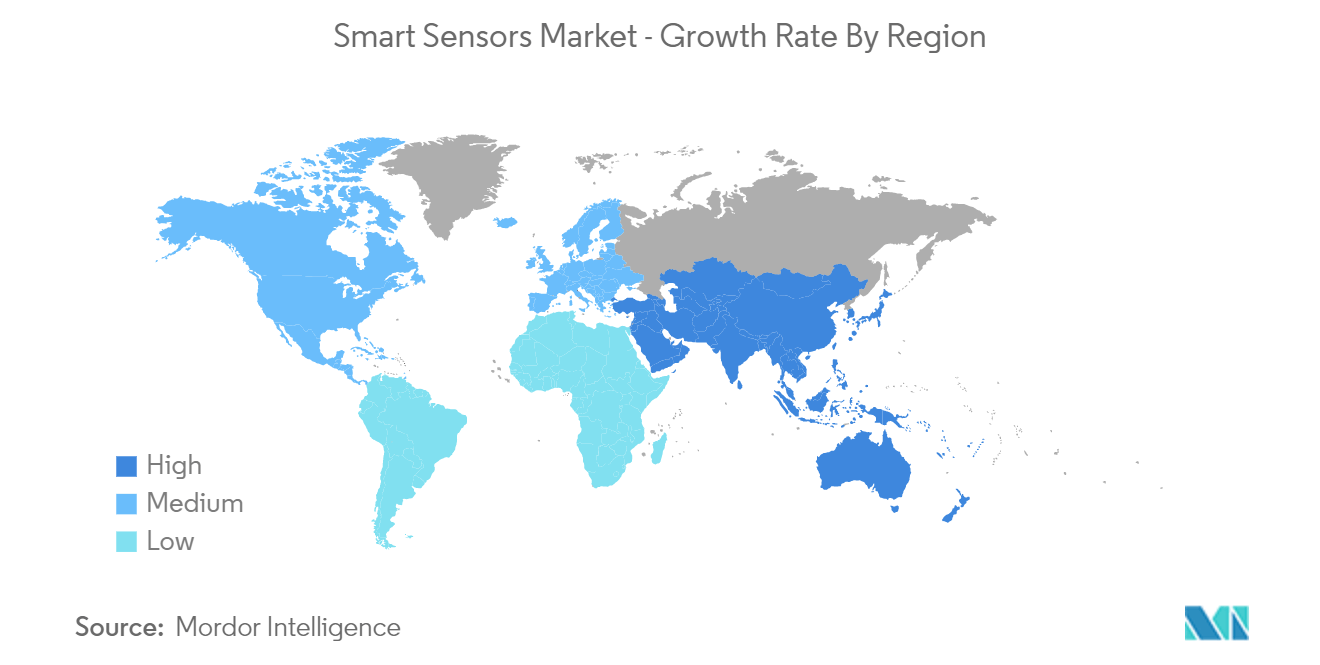Market Trends of Smart Sensors Industry
This section covers the major market trends shaping the Smart Sensors Market according to our research experts:
Temperature Sensors to Witness High Growth
- A smart temperature sensor is an integrated device that consists of a temperature sensor, bias circuitry, and an analog-to-digital converter (ADC). A temperature sensor detects heat to ensure a process maintains within a specified range, ensuring safe application usage or satisfying a prerequisite while dealing with severe heat, risks, or inaccessible measuring places.
- The development of smart temperature sensors has been further accelerated by the emergence of IoT and IIoT as a result of the shift in electronics toward digitalization. Additionally, the digital revolution in the sensing industry has facilitated manufacturers' development of new temperature sensors using low-interface digital technology. The rising use of temperature sensors in the industrial sector further indicates that the market for temperature sensors will develop over the course of the projected period.
- Smart Sensors are regarded as an essential component of the home and building automation network since they assist smart devices in learning about their environment. The temperature sensor is among the most popular sensors used in home and building automation. These sensors are included in HVAC, fire detection alarm systems, lighting control systems, and smart thermostats to regulate and maintain temperature automatically.
- Temperature sensors are widely used in a variety of industries, including the automotive, residential, medical, environmental, food processing, and chemical ones, due to their low cost, compact size, and ease of use.
- The most typical application for temperature sensors in a smart home is a smart thermostat. Forecasts predict that demand for smart homes will rise sharply as a result of growing consumer interest, modest technological breakthroughs, and greater accessibility.
- For Instance, ABB introduced its new FusionAir Smart Sensor, a touch-free room sensor to lessen indoor air pollution, in October 2021. The best room control sensors can monitor the temperature, humidity, carbon dioxide (CO2), and volatile organic compounds (VOCs), which will enhance indoor air quality overall and lower the danger of exposure to viruses. This sensor offers healthy, secure, and cozy surroundings for users while addressing growing concerns about indoor air quality.

Asia Pacific to Witness the Significant Growth
- Asia-Pacific is anticipated to experience significant growth over the forecast period due to the development and expansion of various end-user sectors, including automotive, consumer electronics, and healthcare. Growing technological usage and the government's increased emphasis on infrastructure development will raise the need for smart sensors in this region.
- The region is anticipated to be the largest market for smart sensors due to China, India, Japan, South Korea, and other nations in the region exhibiting a significantly high demand. As the hub of production for numerous industries, such as semiconductors and automotive, which produce household appliances, cellphones, laptops, and peripheral gadgets, China's manufacturing sector has expanded dramatically over the past few years.
- As a result, there has been a significant increase in the manufacture and marketing of sensing devices in this area. IoT vehicle connectivity innovation is fueled by long-range, low-power wide-area networks (LPWAN) technologies like NB-IoT, LoRa, LTE-M, and Sigfox. As required by the automobile industry, LPWANs for IoT sensors enable low-power devices to wirelessly stream data packets across greater distances.
- India is a developing nation with significant government investment in cutting-edge technology and intelligent infrastructure. With such rapid advancements, smart sensors are being widely used in the nation's smartphones, cars, and healthcare systems, among other things. The use of high-end technological items in the nation has grown significantly over the last few years, including smartphones and wearables that heavily rely on smart sensors.
- India and China have seen a noticeable increase in the use of connected gadgets in recent years, including wearable technology, smart homes, connected autos, and autonomous vehicles. Over the coming years, the market for smart sensors is anticipated to be driven by the increase in demand for connected devices.
- Cisco predicts that there will be about 2.1 billion internet-connected gadgets in India by 2023. Due to the rising availability of inexpensive smartphones and more reasonable internet subscriptions, the number of internet users in the country is predicted to surpass 900 million. This increase in smartphone use will fuel the market's expansion.
- Furthermore, the political pressure on China to modernize its industries is driving up demand for smart manufacturing products, including wireless sensor networks and smart sensors. Chinese manufacturers of sensor technologies are currently experiencing a gold rush. High-end machine tools, intelligent sensors, and other technology are in high demand in China's industry.

